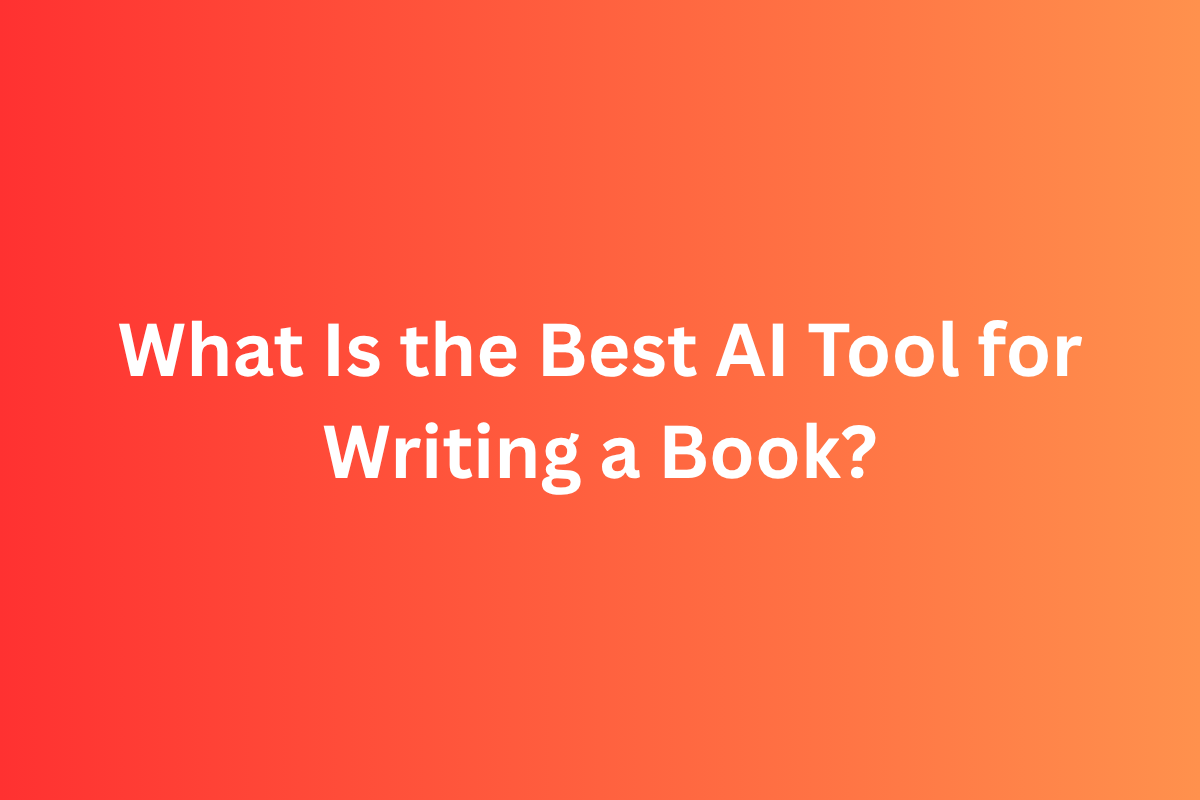Writing a book is an ambitious yet rewarding journey but it can also feel overwhelming. Whether you’re crafting a novel or working on a non-fiction manuscript, AI tools can significantly accelerate and improve your writing process. But with so many options available, which AI writing tool truly stands out as the best choice for book creation?
What Makes an AI Tool Great for Book Writing
The best AI tools for book writing should offer:
- Strong long-form writing abilities to handle chapters, plots, and characters.
- Story planning and project organization for keeping track of complex details.
- High-quality, human-like prose that reflects your voice.
- Research support and multiple export formats.
- Customization for genre, tone, and style.
Best AI Tools for Fiction Writing
Sudowrite
Sudowrite is built specifically for fiction writers. It features a “Story Engine” that helps you turn outlines into detailed scenes. It excels in character development, descriptive writing, and brainstorming new plot ideas—making it perfect for overcoming writer’s block.
NovelCrafter
NovelCrafter is designed to manage entire book projects. It tracks characters, plotlines, and chapters, ensuring consistency throughout the manuscript. It’s great for authors writing complex stories or managing multiple timelines.
AI Tools for Fiction and Non-Fiction
Jasper AI
Jasper is a versatile tool for both fiction and non-fiction authors. Its templates and tone control features make it easy to write chapters quickly. Jasper’s “Boss Mode” allows users to generate longer sections of text efficiently, making it a strong choice for authors who need speed and flexibility.
Claude (Anthropic)
Claude is excellent for projects that require deep reasoning and long context. It can handle large manuscripts while keeping track of important details. It’s ideal for research-heavy non-fiction writing or books that require logical flow and factual accuracy.
AI Tools for Non-Fiction and Manuscript Drafting
Youbooks AI
Youbooks AI is tailored for non-fiction writers. It can transform an idea or outline into a fully structured manuscript of up to 300,000 words. It is especially useful for educators, entrepreneurs, and professionals who want to publish books based on their expertise.
Other Helpful Tools
Writesonic
Writesonic works well for non-fiction, book marketing copy, and repurposing blogs into book chapters. It supports multiple languages and has summarization and rewriting features.
Squibler
Squibler is a simple tool for fiction writers. It includes plot generators and templates to help you plan chapters while maintaining an overview of your story structure.
Comparing the Top Tools
| Tool | Best For | Strengths | Limitations |
|---|---|---|---|
| Sudowrite | Fiction writing | Creative ideas, character and scene building | Limited plot memory for long stories |
| NovelCrafter | Complex fiction projects | Story organization, consistency tools | Requires some setup and learning |
| Jasper AI | Fiction & non-fiction | Fast drafts, templates, tone control | Needs editing for style consistency |
| Claude | Research-heavy writing | Long-context reasoning, structured flow | Less suited for pure storytelling |
| Youbooks AI | Non-fiction manuscripts | Idea-to-book generation, large outputs | Not designed for fiction workflows |
| Writesonic | Non-fiction, marketing | Multilingual support, repurposing content | Lacks strong storytelling features |
| Squibler | Fiction chapter planning | Plot templates and chapter-by-chapter design | Writing quality may need heavy editing |
Best AI Tool by Use Case
- For Fiction Authors – Sudowrite + NovelCrafter
- For Non-Fiction Authors – Youbooks AI
- For Marketing or Hybrid Projects – Jasper AI or Writesonic
- For Research-Intensive Books – Claude
- For Chapter Planning and Plotting – Squibler or NovelCrafter
How to Use AI Tools Effectively
- Start with a clear outline: Define chapters, characters, and key ideas first.
- Use AI for drafts: Let the AI generate sections or scenes for you.
- Guide the tone and style: Provide examples of your writing so the AI can match your voice.
- Edit and refine: Human editing is essential to maintain quality and originality.
- Work chapter by chapter: This makes it easier to track progress and ensure consistency.
- Export and format properly: Use tools that allow easy export to Word, PDF, or EPUB.
Final Recommendation
- If you are writing fiction, NovelCrafter combined with Sudowrite offers the best mix of organization and creativity.
- For non-fiction or business books, Youbooks AI is the most efficient option for generating structured manuscripts.
- Jasper AI is ideal for authors who want versatility, while Claude is best for research-based projects that require logical flow.
Conclusion
AI writing tools can transform the way authors write books by saving time, boosting creativity, and helping maintain consistency. The key is to use AI as a writing partner not a replacement for your unique voice.
Start with the tool that best fits your goals, experiment with its features, and refine the output with your own editing. With the right AI tool, writing your book can become faster, easier, and more enjoyable.
